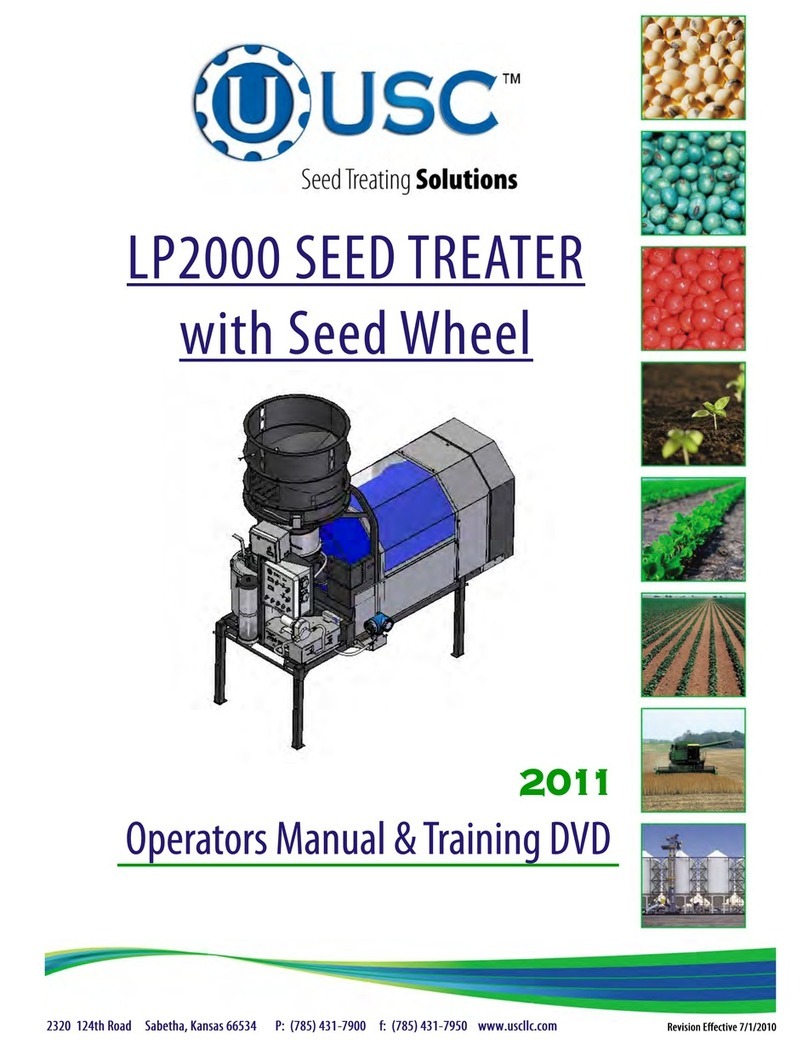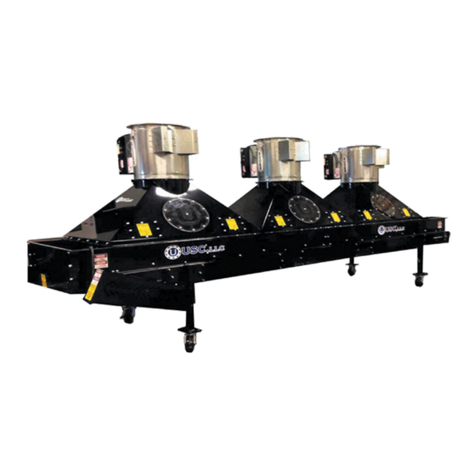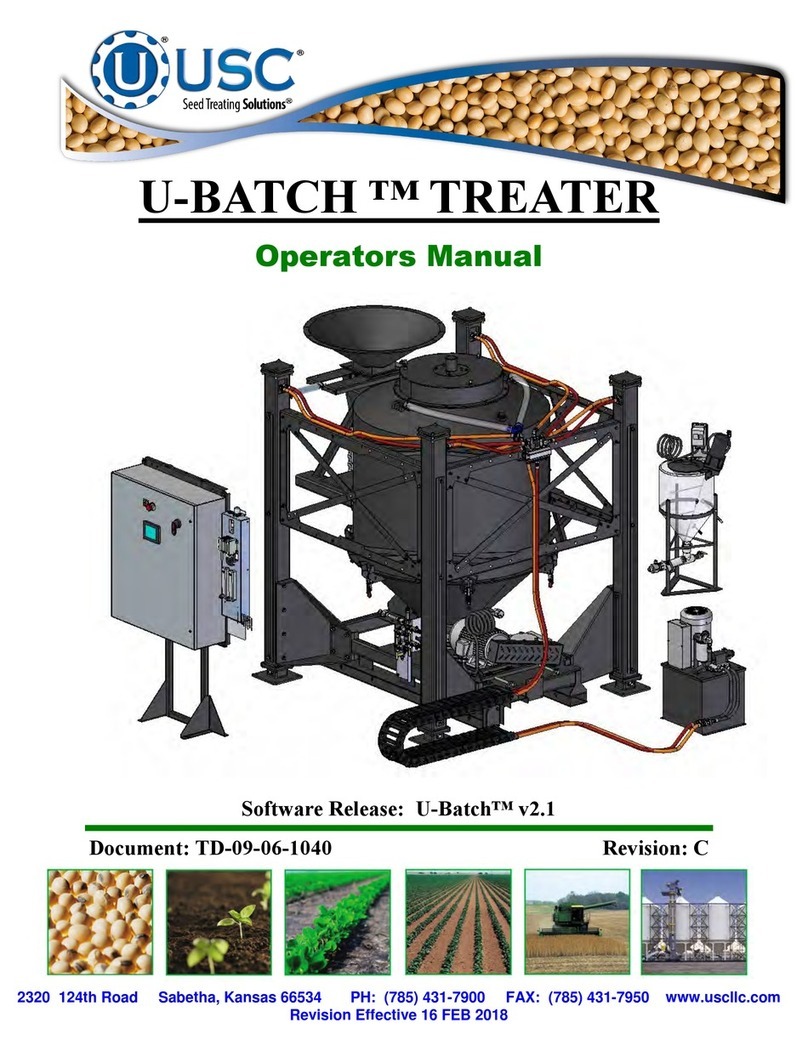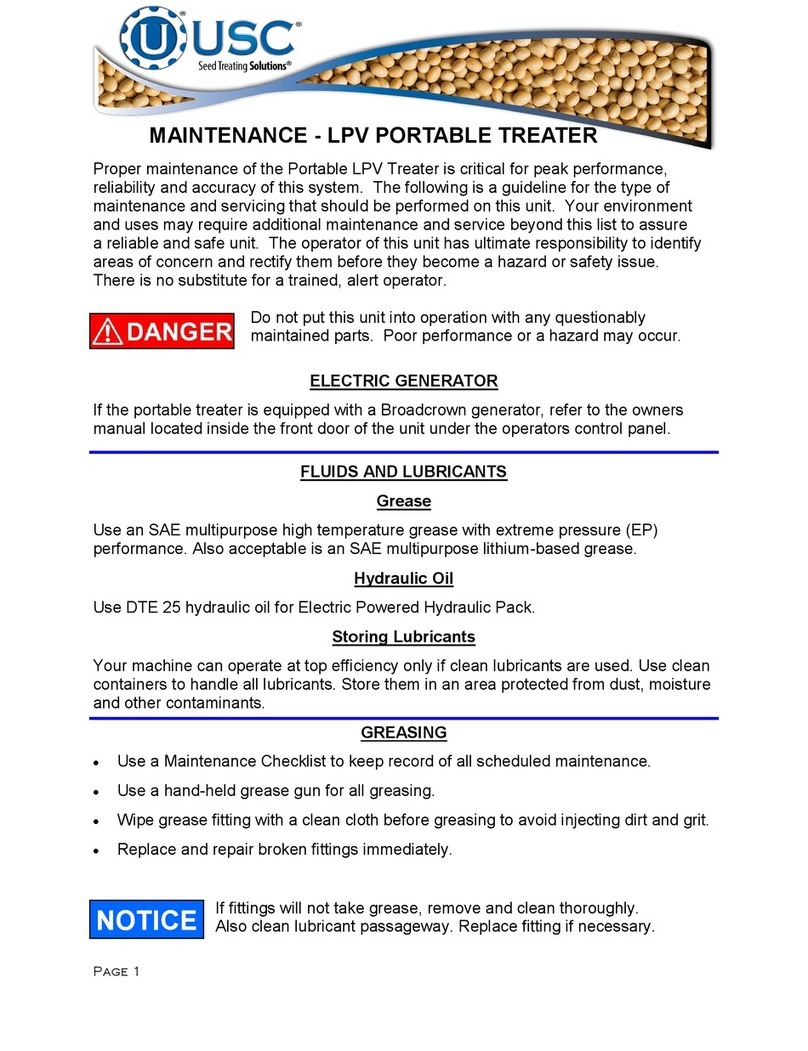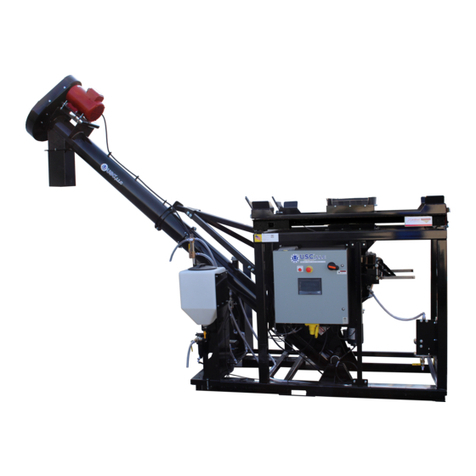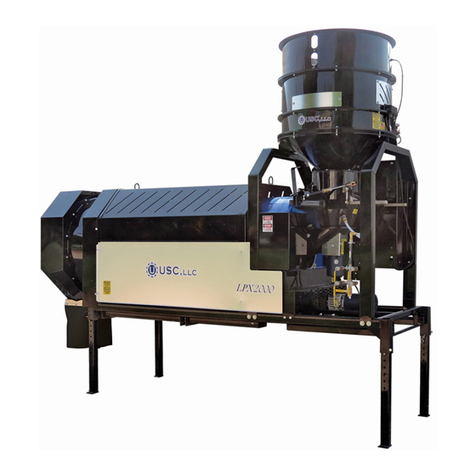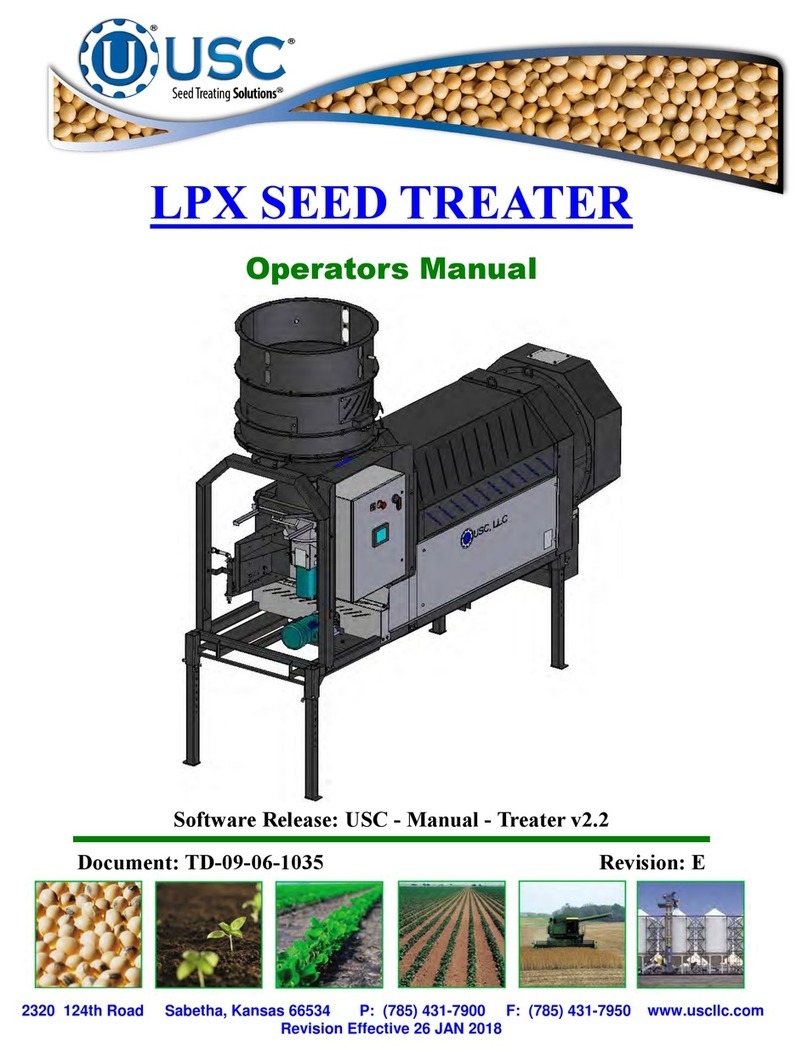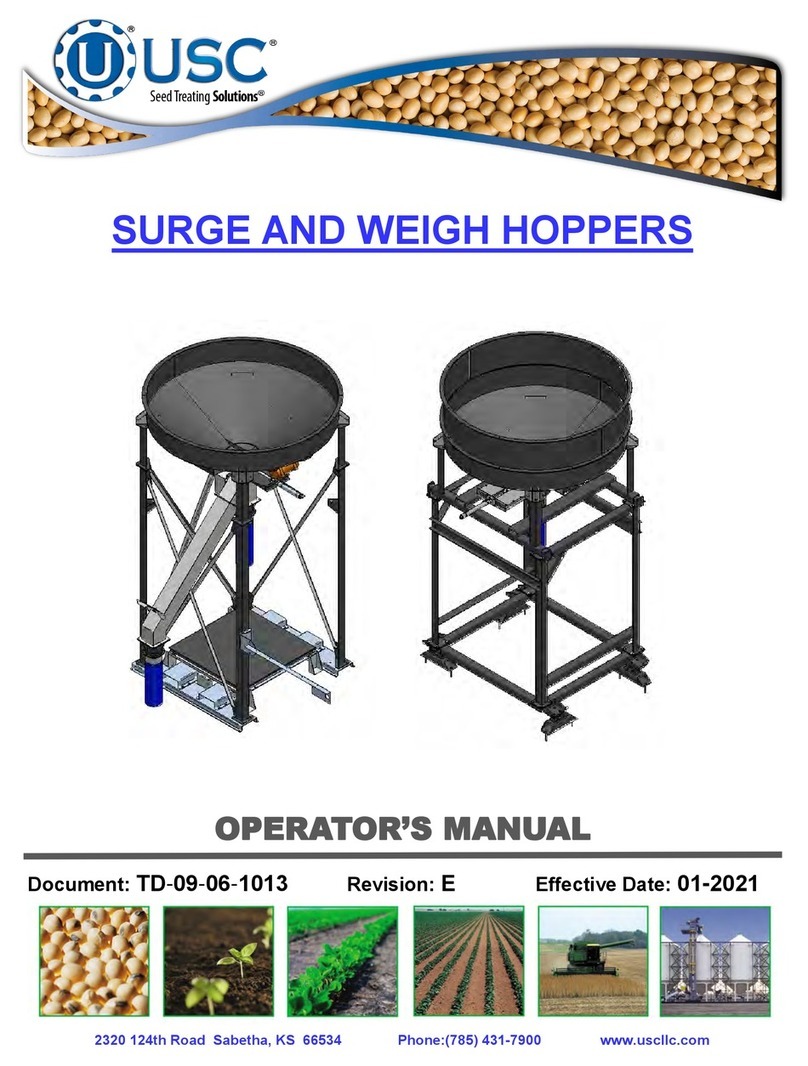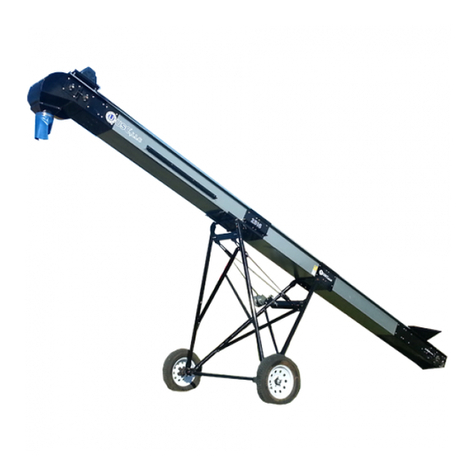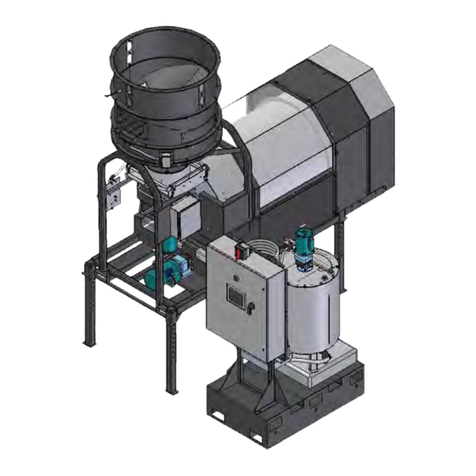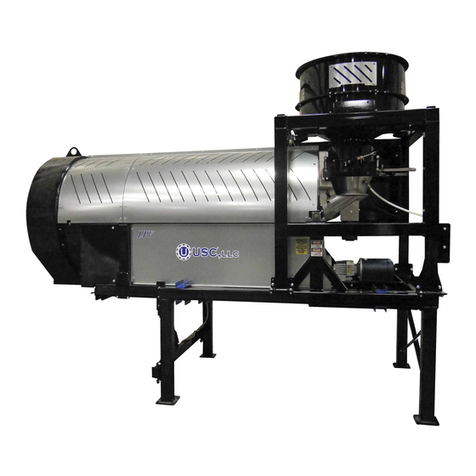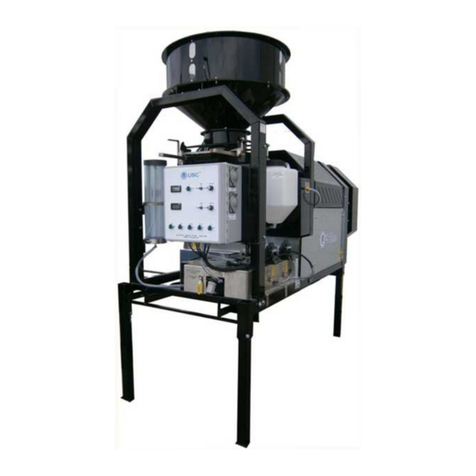
USC, LLCPage 2
LPX MANUAL SEED TREATER
Thank you for choosing USC, LLC for your equipment needs. We appreciate your
business and will work diligently to ensure that you are satisfied with your choice.
OVERVIEW
The purpose of this manual is to provide you with the basic information needed to
operate and maintain the LPX manual seed treater. It does not hold USC, LLC
liable for any accidents or injuries that may occur.
OPERATOR RESPONSIBILITIES
As the purchaser/owner/operator of this equipment and control system, you have an
obligation to install, operate, and maintain the equipment in a manner that minimizes
the exposure of people in your care to any potential hazards inherent in using this
equipment. It is critical that the owner of this equipment:
Has a clear and documented understanding of the process this machine is
being used in and of any resulting hazards or special requirements arising
from this specific application.
Allow only properly trained and instructed personnel to install, operate, or
service this equipment.
Maintain a comprehensive safety program involving all who work with this
machine and other associated process equipment.
Establish clear areas of staff responsibility (e.g. operation, setup,
sanitation, maintenance, and repairs).
Provide all personnel with necessary safety equipment.
Periodically inspect the equipment to insure that the doors, covers,
guards, and safety devices are in place and functioning, that all safety
instructions and warning labels are intact and legible, and that the
equipment is in good working order.
In addition to the operating instructions, observe and enforce the
applicable legal and other binding regulations, national and local codes.
As the person with the most to gain or loose from working safely, it is important that
you work responsibly and stay alert. By following a few simple rules, you can
prevent an accident that could injure or kill you or a co-worker.
Introduction
Introduction
